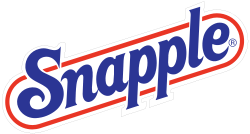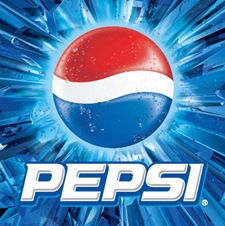OUTDOOR advertising is a growing category — not just billboards, but increasingly, weird publicity stunts that often go awry.
There have been more of them than usual in recent months. On the positive side, people seemed to like the glass elevator in Manhattan that was done up to look like a giant Oreo dunking into a glass of milk. A video of the scene was posted on YouTube, where it was drawing lots of praise.
On the down side, people in London were not so fond of a prank by Right Guard, which sent a team of people onto subway trains with tiny video screens in the armpits of their shirts. Whenever one of the team members reached overhead, a commercial for Right Guard would play in someone’s face.
Others examples have merely served to puzzle. A Chevrolet billboard that used real pennies was stripped clean within 30 minutes. In Singapore, advertisers painted an extra yellow safety line on a train platform with the name “Wonderbra” on it, leaving commuters to figure out the message (that the bra’s lifting qualities were so forceful that wearers would have to stand back).
For the most part, the silliness is intended to lift an advertiser’s message beyond the clutter.
“Advertisers are being pushed to creative extremes, partly because it’s just so difficult to get consumers’ attention these days,” said Pete Blackshaw, executive vice president of Nielsen Online Digital Strategic Services, which advises clients on managing their online reputations. “It may just be a flash of brilliance that everyone pays attention to, and it gets that huge return, but it’s very difficult to replicate on a regular basis.”
Advertisers spent $7.3 billion on outdoor ads last year, a rise of 7 percent from 2006, according to the Outdoor Advertising Association of America. About 16 percent of that fell in the “alternative” category, which covers ads that were not on billboards, bus shelters or the like.
Alternative is a good way to describe the Right Guard campaign staged in London last month. While Right Guard referred to the subway stunt as “pitvertising,” bloggers called it icky and posted cheeky speculations about what might happen if the technique were applied to other products.
Despite the criticism, executives at Dial, the subsidiary of Henkel International that owns Right Guard, said they were pleased.
“It was one of those wacky ideas that came to fruition: somebody said, what about putting a TV under someone’s armpit at the point of perspiration?” said Nina Daily, a marketing manager at Dial. “We were obviously hopeful that the Right Guard brand would come out in a good light, which I believe that it did.”
Other people were not so sure.
“I wouldn’t want to look under someone’s arm,” said Brian Martin, chief executive of Brand Connections, a New York marketing agency that did not work on the promotion. “I don’t care whether you’re a deodorant or not, it’s just not something a consumer’s going to go home and feel good about.”
Sometimes stunts are too abstract to resonate with people. That may have been the case with the Wonderbra campaign in Singapore that ran this year: Many people did not get it.
“This one took me a while,” said a blogger who posted a picture of the campaign on her PhotoShelter blog.
“I don’t feel like the average consumer would fully understand the concept behind this idea,” wrote a commenter on the I Believe in Advertising blog.
The notion, according to the agency, Euro RSCG Singapore, was that the second line demonstrated that “with the bust-enhancing effects of Wonderbra, those who use the product need to be even farther back.”
“For us, the goal was getting our foot in the door with a new client, and this was a really fun way to do so,” Charlie Blower, executive creative director of Euro RSCG Singapore, said in an e-mail message. “The fact that the core idea is quite subtle in nature means the campaign appeals to the target audience in a nonconventional way.”
Even when stunts are well received, they do not always go off without a hitch.
Last month Chevrolet U.K. put up a billboard in Central London that was meant to emphasize that the new Aveo was budget-friendly. The designers used magazine glue to affix British pence to the background.
The company was hoping for consumer reaction, and it got it: passers-by peeled the money off rather quickly.
“It only lasted for 30 minutes,” said Daniel Glover, creative director of Mischief, the public relations agency that devised the campaign. “But it kind of made everybody smile.”
HSBC hit some snags with an outdoor campaign this summer, when it sponsored Wimbledon. In honor of the grass-court tennis tournament, its London advertising agency, JWT London, commissioned grass portraits of three little-known Wimbledon personalities, made by artists who expose grass seeds to different amounts of light to produce shades of green. It also decided to cover taxis and subway stations with grass.
Grass, as it turned out, was not the most flexible medium.
One of the portraits was of a British player, Tara Moore, who was out of the tournament by the time her grass portrait had grown (it takes about eight weeks).
As for covering the stations and taxis, the agency wanted to use real grass, said Mark Norcutt, the art director of JWT London. “But because of health and safety, we weren’t allowed to, because people might slip on it if it were on the floor. It got to be a bit of a nightmare,” he said.
In the end, Mr. Norcutt went with fake grass on the taxis and stations, and kept the portrait of the eliminated Ms. Moore in the stadium.
“A lot of people wanted to know about the process, a lot of people came up and touched it,” Mr. Norcutt said. “That was part of it as well — we wanted people to interact with it. Some were even sniffing it.”
Papa John’s, too, has been wrestling with natural elements as it tries to create a giant pizza in a field near the Denver airport in time for the Democratic National Convention. The idea is to promote its whole-wheat crust pizza.
Papa John’s hired an artist, Stan Herd, who has created crop circles for Absolut Vodka and Beck’s beer, among others. He devised a pizza made of pepperoni (red mulch), onions (limestone), green peppers (cornstalks) and olives (black mulch).
“It’s the best field location I’ve ever had,” said Mr. Herd, who says it will take him another week to finish. “All of the passengers at that point are all anxious to get out, and all looking out the window, and we’re perfectly poised to have them see something.”
If Papa John’s is lucky, its stunt will be as well received as the one done this spring for Oreo by Draftfcb. The agency converted a clear glass elevator in Manhattan Mall with a giant sticker of an Oreo cookie; on the clear vestibule in the lobby, it pasted a large sticker of a glass of milk. Whenever the elevator descended or ascended, it looked as if the Oreo was being dunked in a glass of milk.
The gimmick lasted only a day, but YouTube video of it has been viewed more than 34,000 times. Oreo, which is owned by Kraft Foods, said it was a one-time event.
“Out-of-home is an area that it makes sense to explore,” said Laurie Guzzinati, a Kraft spokeswoman, but any further plans “are all sort of T.B.D.”
 The Plot Thickens: Why Case Studies Create New Customers
The Plot Thickens: Why Case Studies Create New Customers Tell the Whole Truth, by Clinton Korver
Tell the Whole Truth, by Clinton Korver Closing the Gap: The Sales and Marketing Alignment Imperative
Closing the Gap: The Sales and Marketing Alignment Imperative



















 Can an airport be the "point of sale" for a trip to a theme park? Yes, if one by one, all the flights on the trusty departures board come up "canceled" -- and a head pops up on the board noting that "more fun close to home" is available at Six Flags. That's what happens in a spot designed to make the point that a trip to Six Flags is much more fun and relaxing than plane travel. Except, the Six Flags guy is so hyper, making his point so loudly, that I went into stress overdrive. Check out the spot
Can an airport be the "point of sale" for a trip to a theme park? Yes, if one by one, all the flights on the trusty departures board come up "canceled" -- and a head pops up on the board noting that "more fun close to home" is available at Six Flags. That's what happens in a spot designed to make the point that a trip to Six Flags is much more fun and relaxing than plane travel. Except, the Six Flags guy is so hyper, making his point so loudly, that I went into stress overdrive. Check out the spot  Wow! Another nerve-wracking experience with another new campaign. Since I have asthma, I found the PSA for the American Asthma Foundation almost too realistic. The spot shows a man sitting peacefully on a park bench -- until a pair of hands appear and place a plastic bag over the man's head. Three solo drumbeats introduce the words "This...Is...Asthma" as the man struggles to breathe. Thankfully, he eventually frees himself from the bag. I've never had an asthma attack that was quite that bad, though I do remember some fairly traumatic hospital visits when I was a child. The 30-second public service announcement (PSA) marks the first awareness advertising undertaken by the one-year-old AAF. The campaign, created by DeVito/Verdi, began airing in May in New York, Los Angeles, Chicago and San Francisco. I'd say the ad succeeds very well in increasing awareness of the perils of asthma. I'd be surprised if it wasn't successful. . Watch it -- gasp --
Wow! Another nerve-wracking experience with another new campaign. Since I have asthma, I found the PSA for the American Asthma Foundation almost too realistic. The spot shows a man sitting peacefully on a park bench -- until a pair of hands appear and place a plastic bag over the man's head. Three solo drumbeats introduce the words "This...Is...Asthma" as the man struggles to breathe. Thankfully, he eventually frees himself from the bag. I've never had an asthma attack that was quite that bad, though I do remember some fairly traumatic hospital visits when I was a child. The 30-second public service announcement (PSA) marks the first awareness advertising undertaken by the one-year-old AAF. The campaign, created by DeVito/Verdi, began airing in May in New York, Los Angeles, Chicago and San Francisco. I'd say the ad succeeds very well in increasing awareness of the perils of asthma. I'd be surprised if it wasn't successful. . Watch it -- gasp -- 
 Finally, a more peaceful vibe. A State Farm out of home campaign running in California -- of course -- offers tranquility and bliss, but for your car. "Experience Peace of Drive," is the tag for 2- and 3-D outdoor, street installations, and pop-up "car spas," along with billboards, cable car posters, bus shelters and bus wraps. Gotta envy those cars, which get the full spa treatment, from aromatherapy candles to massage to yoga to the equivalent of cucumber slices on one's eyelids. I just wondered about the acupuncture ad. Wouldn't acupuncture virgins (I'm experienced, thank you) wonder if the car had maybe been attacked by spear-throwing Indians in an old-time Western movie? BooneOakley handled both creative and media-buying duties. See the ads
Finally, a more peaceful vibe. A State Farm out of home campaign running in California -- of course -- offers tranquility and bliss, but for your car. "Experience Peace of Drive," is the tag for 2- and 3-D outdoor, street installations, and pop-up "car spas," along with billboards, cable car posters, bus shelters and bus wraps. Gotta envy those cars, which get the full spa treatment, from aromatherapy candles to massage to yoga to the equivalent of cucumber slices on one's eyelids. I just wondered about the acupuncture ad. Wouldn't acupuncture virgins (I'm experienced, thank you) wonder if the car had maybe been attacked by spear-throwing Indians in an old-time Western movie? BooneOakley handled both creative and media-buying duties. See the ads  Another, more peaceful campaign promotes the San Francisco Zoo.
Another, more peaceful campaign promotes the San Francisco Zoo.










